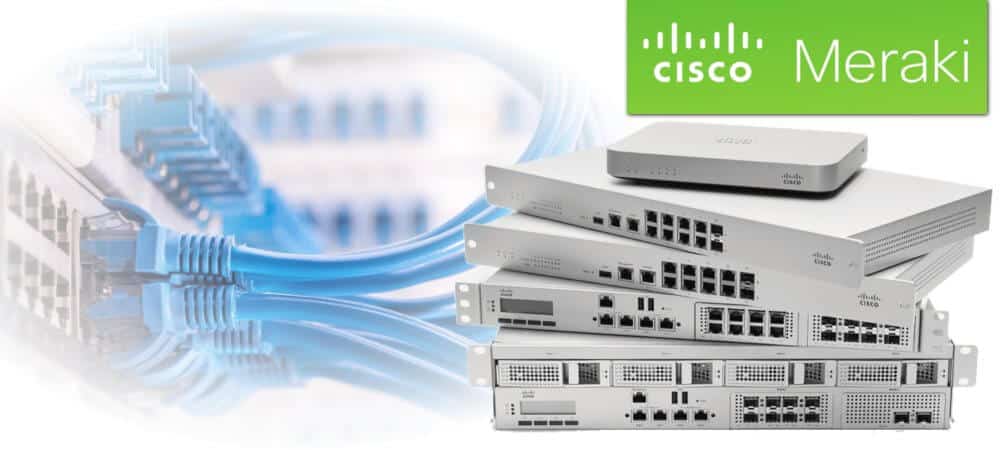Cisco Meraki Switches
Cisco Meraki cloud-managed switches were hailed as the newest generation of network switching, and the industry hype surrounding them was huge ever since they came out. Aimed at small to mid-tier enterprises, these switches were designed with a cloud architecture with the sole purpose of handling high-performance networks and big-tier enterprises, but still with enough simplicity so that a small IT department or a single network engineer can easily make use of them.
Low-level enterprises often depend on network switches to put together all their devices and transfer and process valuable data. Cisco Meraki Switches in Dubai aims to make available the best, world-class cloud-managed network connectivity, which makes it easy to manage and deploy. It also aims to provide network managers with every feature they need: WiFi, switching, security, and complete control over all mobile devices made available on a centralized, cloud-based platform.
The lack of any complex command line based set up procedure ensures that all users are up and ready to go as soon as the switch is plugged in, taking out the need for IT personnel and complicated procedures. This saves time and a lot of effort on the part of enterprises, making it a viable solution for their networking needs.
In addition to providing a very centralized form of management, it also allows users to make use of real-time analyses and provide an overall view of your network, making sure you see the whole picture and how it is being used. This allows you to manage it remotely, according to diagnostics and reporting, and pull out information and statistics at any place and at any time without the need for exclusive IT and connectivity hardware. This makes it a favorite among users, who tend to stand by Cisco Meraki switches.
 Why Cisco Meraki Switches?
Why Cisco Meraki Switches?
Due to their simple provision methods and ease of management, Cisco Meraki switches provide the performance demanded of today’s wired and wireless networks.
With access and aggregation layer switches forming the backbone of every network, these Cisco Meraki switches combine a secure and scalable performance with a management experience that’s intuitive and elegant. This has caused users to term them as a simple and powerful switch series.
Since they are easy to deploy and manage, these switches offer a true zero-touch provisioning.
These can be configured purely from a web browser and scale great complexities, which make them a great asset to enterprises. Troubleshooting any issues, even from remote locations, is a groundbreaking tool which adds to their value.
These allow the customers to build networks that are resilient, squeezing the most out of existing cabling and allowing for physically stacked switches through quick cabling and cross-stack link aggregation for a resilient connection to the core of the network using the available bandwidth. This network can be taken a step further and strengthened using an IP gateway redundancy or a powerful dynamic routing with OSPF.
Cisco Meraki has paved the way to the concept of Virtual stacking, making users manage up to thousands of ports at the same time, irrespective of the actual physical location of the switches.
The Meraki dashboard mobile app, made available for iOS and Android, is all the more incentive for those who use Cisco Meraki switches.
This is due to the ease with which they can monitor, deploy, troubleshoot, and manage their entire Meraki infrastructure from anywhere in the world. In addition, they can view their wireless, switching, and security infrastructure, network status and usage, and stay updated via push notifications for power outages. All these features are quite attractive as far as enterprises are concerned.
Models of Cisco Meraki Switches
· Layer 2 Access Switches
o MS220, 8/24/48 port models (PoE and non-PoE)
· Layer 3 Access Switches
o MS320, 24/48 port models (PoE and non-PoE)
· Aggregation Switches
o MS420, 24/48 port models (non-PoE)
Advantages of Cisco Meraki Switches
There are many factors that prove advantageous with Cisco Meraki switches. A few key benefits are discussed below.
- The highly scalable nature of these switches enables them to support up to 40G uplinks, which is a big volume in terms of enterprise-grade services.
- These switches provide great troubleshooting service, which users often use as Packet Captures due to the high level of details that are given in the form of diagnostics and reports.
- Any interruptions or connectivity issues are shown immediately, with the problem explained at a glance.
- It volunteers information about what apps are performing what function on the network, which keeps the centralized management functional and working.
- The centralized GUI and its interface make the deployment and configuration very simple, extremely user-intuitive, and quick to learn.
- The Cisco Meraki can be unboxed and configured quickly.
Disadvantages of Cisco Meraki Switches
The few factors that make it difficult to implement Cisco Meraki switches are as follows:
- The lack of ease with third parties with localhost integration.
- Cloudy information that is passed down might cause problems. This is most probably solved by the Insights tools.
- The lack of traffic-shaping rules in switches is a cause for concern to many enterprises.
- The lower end Cisco Meraki MS switches do not possess physical stacking capabilities, unlike higher models. Although they do have virtual stacking abilities, users have expressed the need for physical stacking in these switches as well.
- Increased customization in case of notifications is also requested from Cisco Meraki switches as many enterprises are unable to find the data that they seek.
Conclusion
Cisco Meraki switches are indeed a great option for use by most enterprises, and while they may not be employed for the core layer, they do provide a robust, end-to-end solution for any enterprise, especially at the distribution layer. They are perfect for any industry and are adapting to changes in technology, making them an obvious choice for many networks.






